
Most boat owners regard their boat as a living, breathing thing, but when real living things-especially the microscopic variety-move aboard and start occupying large swaths of damp real estate, its time to draw the line. Weve done a series of reports on mildew in past articles, but those black spots on the deck, lines, and canvas probably arent mildew. Mildew and mold require darkness, and even the shaded areas on deck are too well lit. Those spots are more likely black algae and lichens, the latter a symbiotic combination of algae and fungus.
Bleach doesn’t work very well on algae or lichen; it doesn’t penetrate the cell walls well, and plants in general are not very sensitive. Also, bleach doesn’t really remove color from most materials or stains that have been in the sun; if they are colorfast in UV, they can usually resist bleach as well. The best we can do is find something to kill the organisms, and then remove the dead bodies with scrubbing and surfactant. After the heavy scrubbing is done, weak acid cleaners and bleach can be used to remove metal stains and break down organic material, respectively.
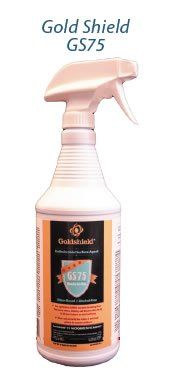
What We Tested
For this round of testing, we will be exploring quaternary amines, both silicone and benzyl substituted. The silicone variety offers greatly improved water resistance (it is commonly found on sportswear), while more common benzyl amines (ubiquitous in cleaning and non-bleach sanitizing products) offer better economy for cleaning and mildew prevention inside the boat. (For an extended explanation of quaternary amines, and links to past reports on mildew prevention and treatment, see the Inside Practical Sailor blog post Confounding Mildew Wars, Nov. 4, 2013.) Although you pay premium prices for .02 to .5 percent benzalkonium chloride (BAC) solutions in sanitizing cleaners and algae removers, there is a cheap source: Swimming-pool algae treatments contain 30 to 50 percent BAC at a far more attractive price.
One of our main goals with this evaluation was to compare the performance of Elite Marine Shield and Gold Shield, two silicone-substituted quaternary amines that were the subject of a previous report. Both promise durable, weather-resistant protection.
We also picked two BAC-based swimming pool algae eliminators available at any big-box and hardware store: HTH Algae Guard 3x concentrate (30-percent active), and Clorox Pool and Spa Algae Eliminator (50-percent active). Both looked to be effective and cheap alternatives, well suited to exterior cleanup and indoor applications. Several other BAC products marketed for exterior use that we did not test also promised long-lasting protection outdoors. For example, Wet and Forget, which is sold through some hardware store chains and widely available on the Internet, is a 10-percent BAC solution that is diluted to 1 to 2 percent BAC for use. It claims to remove algae from home roofs and keep it away for at least one year.
Our current benchmark for this type of protection is our do-it-yourself blend, Formula B, which costs just pennies to make. (See accompanying sidebar and the Homemade Mildew Preventers that Really Work Inside Practical Sailor blog post, Oct. 14, 2013).
How We Tested
In this article, we are continuing the work we did in Mildew Treatments and Stain Removers (see PS November 2013 online). We dusted off the fresh samples of stock of cotton canvas rectangles to use as algae incubators, just as we did in the mildew test. We used untreated canvas and our Borax/baking soda/TSP Formula B as controls.
We tested each product on Sunbrella (nine removable window covers), dock lines, smelly rain gear, and shoes. We also tested each product on nylon, type IV PFDs that had been taped off in sections; each section was treated with a different product. The test platforms were stored in damp locations, both exposed to the elements and sheltered. We experimented with both pool algae treatments and Borax treatments to eliminate green coatings on a garden shed and a heavy moss accumulation on a shingled roof.
We also sprayed each product on clear plastics to observe any damage and tried several combinations on algae-spotted fiberglass decks.

Observations
Because these are all organic chemicals, like wax, it is only reasonable to expect limited lifespan with UV exposure. We found that performance started to fade after 12 months in the sun. Both silicone and alkyl quaternary amines provide longer-term protection in indoor environments, but for deck areas and indoor/outdoor carpet, one should not expect more than a single season of protection. Toward the end of our test period, the silicone formulas seemed to have a significant edge. If any product is to be used to kill existing algae and followed by aggressive cleaning, the product will be removed in the process. To reduce cost and the amount of wasted product, you can instead use a generous volume of a less-expensive BAC product to produce a gross kill, wait a few weeks for the UV to do its work, scrub away the bodies, and then lightly spray the area with one of the more expensive silicone-substituted products as a preventative. BAC worked as a preventative too, just not quite as well.
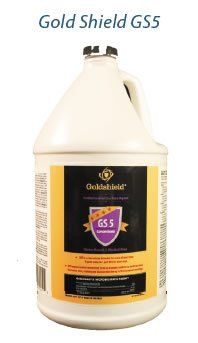
Although benzalkonium chloride can quickly kill micro-organisms on all surfaces, time is your friend. Unlike bleach, which provides a quick kill and dissipates just as quickly, benzalkonium chloride works over longer time periods, slowly soaking into the thicker layers and delivering a deeper kill. Dont be in a rush. There is no concern over leaving the solution in place to soak for hours or days. Unlike bleach and alkaline cleaners, which kills and also chemically attack the cell structure and surface bonds, BAC only kills.
Time, exposure to UV, and scrubbing with alkaline cleaners are needed to remove the debris after it has decomposed a bit. The heavy layers of algae on our roof, which we spray with a 2-percent solution of Clorox Pool and Spa, turned brown within a week, and the rain removed most of the remnants over the next few months.
We tried soaking Sunbrella followed by scrubbing and laundering; this was no more effective than straight cleaning. However, if we sprayed the canvas in place, left it in the sun for two weeks, and then scrubbed with a brush, the algae was considerably easier to remove and was removed more completely. The improvement was even more noticeable on lichen, which are unaffected by most cleaners once they get a good grip. In our test, the BAC made the lichen crumbly and loose; the improvement was much greater than the photographs convey.
Warm weather also helps. Although BAC is effective down to freezing, the greater the cell metabolic rate, the faster it works. However, in hot weather, it might dry too quickly to fully penetrate, so often morning or evening treatment is best.
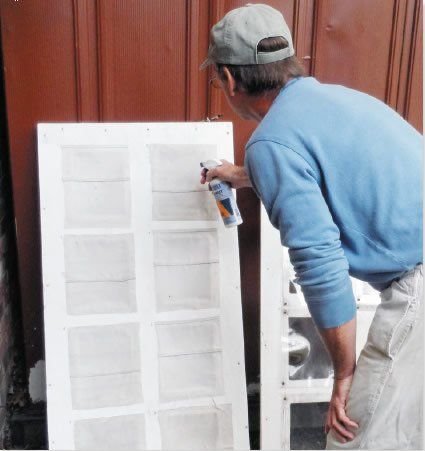
While all of these products were effective in protecting nylon life jackets and acrylic canvas (Sunbrella), don’t expect miracles. Previously, we tested these products on cotton canvas sheet bags (constantly damp), and they all failed miserably, performing no better than untreated canvas.
It seems that Borax-based treatments are considerably more effective than BAC on cellulose-based materials like cotton. Interestingly, we were first intrigued by Borax-based treatments when exploring the totally non-sailing related topic of preserving totem poles. We learned that the National Park Service uses glycol borate ester solutions to preserve historic wooden structures, and wood is primarily cellulose. Silicone substituted and benzyl quaternary amines, on the other hand, have much higher affinity for synthetic fibers and materials (nylon, polyester, fiberglass, and even roofs) than Borax, which washes out of these very easily.
Our conclusion? The best algae and mildew preventative for all fabrics remains an effective water repellent treatment (see Keeping Canvas in Tip-top Shape, PS February 2014). Mildew preventatives clearly add additional protection. Some of the dirty covers we tested had been treated with water repellent, and the quaternary amine treatments boosted that protection.
In terms of specific fabrics, silicone quaternary amines are best for synthetics, and Borax-based treatments are best for natural materials and for all interior applications, including synthetics. We suspect this is because the Borax better attacks the soil that feeds mildew.
Human toxicology of these products has been extensively tested, and they are generally accepted as safe. However, many BAC products are not sold in California because of the states strict environmental laws, and some users have reported breathing difficulty after spraying large areas with high concentrations (2 percent or greater). Solutions of greater than 0.1-percent BAC have not been associated with negative effects and are permitted in cosmetics and hand sanitizer.
People with asthma or other sensitivities should use a chemical respirator when spraying large areas. Exposure can also be reduced by soaking or brush application. Our testers did not notice any effects even when spraying very large areas at high concentration; they were careful to use a coarse spray, to work from leeward to windward, and to keep their backs to the light breeze. Marine toxicity is moderate and is avoidable with reasonable care.
Other uses
Odor control. We also observed that BAC is the primary ingredient in treatments sold for deodorizing wetsuits, sneakers, waders, and rain gear. After a good scrubbing, we applied BAC inside sneakers and seaboots; they still stunk, even weeks later. While it is certain these products can control the growth of odor-causing bacteria, we noticed no effect on gear that was already stinky. Most probably the odor-causing agents are already deeply impregnated in the materials, and quaternary amines can do nothing to decompose or mask what already exists.
What about foul-weather gear? Certainly a 0.2-percent solution used as a rinse would provide an odor-fighting film throughout the garment, but the practice would need to start before the gear was smelly.
Bilges and lockers? We didnt have any smelly spaces to test, but we think it might be useful here. It is non-corrosive and non-bleaching.
Harm to fabric also was a concern. To test for this, we applied each test product at five times the recommended doses to canvas, gelcoat, acrylic, polycarbonate, and soft vinyl window materials, allowing them to dry through multiple cycles. None of the test products harmed fabric or caused discoloration. Unlike bleach, these products can be left on for a prolonged period so they can soak in. However, we always recommend covering clear vinyl during any chemical application.
Goldshield GS5/GS75
Based on a silicone-substituted quaternary amine salt, Goldshield GS5 and GS75 claim to have antimicrobial properties that can last up to 50 laundry cycles. We tested the concentrated GS5, and it performed very well on our life jackets, preventing all growth, even after exposed to a full year of rain and partial sun. (One small spot appeared as spring arrived.)
It is available both in ready to use form (GS75; 1-percent active; $195 for one gallon, certainly a multi-year supply) or as a concentrate (GS5; 5-percent active; $20 for a 32-ounce spray bottle, enough to do your canvas once or twice; or $195 for one gallon, which provides 6.5 gallons of ready to use product at .75-percent active).
Bottom line: Recommended. This is an effective product for treating acrylic , nylon, canvas, and for interior upholstery.
ProGienics
ProGienics is a microbiostat agent made by ProVetLogic and distributed by Elite Marine Shield. It is based on a silicone-substituted quaternary amine salt. It provided lasting protection through a full year of partial sun and rain exposure, in our tests. It costs $36 for 8 ounces of concentrate to make one-gallon of application solution.
Bottom line: The 8-ounce concentrate strikes us as the Budget Buy in this category.
Clorox Pool and Spa Algae Eliminator
Like several nearly identical pool treatments (concentrations and package sizes vary), this product contains benzalkonium chloride and a small amount of co-solvent required to stabilize the solution. For heavy-duty algae killing, we diluted this product 50:1 (about $1.04 per gallon). For algae and mold preventative, we diluted it to 100:1 (about $0.52/gallon).
Unlike aggressive cleaners containing bleach and alkalis, it does nothing to help remove the growth, but it did a good job of providing a deep kill, even through heavy layers (we used it on algae, heavy moss, and lichen colonizing). A 32-ounce bottle of concentrate costs $13.
Bottom line: Recommended. This product is great for killing algae on canvas, controlling mold inside or out, and even on roofs.
Algae Guard 3x Concentrate
Made by HTH/Lonza Chemical, Algae Guard 3x Concentrate is another common swimming pool product, but it is sold in a large bottle at a slightly lower concentration and lower price per unit. We could see no difference of performance between it and the Clorox. Unless you plan to use it at home, youll want to share with a neighbor, because the one-gallon of concentrate makes up to 250 gallons (depending on dilution) of treatment formula. It costs about $16 for one gallon of concentrate.
Bottom line: This is our Budget Buy for killing algae on canvas and controlling mold inside and out.
Conclusions
Goldshield and ProGienics are effective mold and algae preventatives that show better wash-off resistance on polyester and nylon than benzalkonium chloride or our Formula B when exposed to rain; we recommend these as premium-price treatments that will last a little longer on your sail covers and cushions. For killing and cleaning in one step, Formula B is a little more effective due to its alkaline cleaner function. Additionally, Formula B is the better preventative on wood and cotton products.
For cleaning synthetic canvas (Sunbrella, Top Gun, etc.), if you have a little patience, the best product is generic benzalkonium chloride spray, diluted from pool algae treatment; it is non-damaging to every surface we tested and provides a good kill for both algae and lichens. The primary downside is time; it only kills the algae, and time in the sun is required to weaken the bonds before it can be removed by scrubbing. However, with planning, it offers a low-impact and low cost way to increase cleaning effectiveness and reduce cleaning labor. A single gallon of concentrate yields 25 to 250 gallons of cleaning solution, at a cost of 4 cents to 50 cents per gallon-thats a bargain for even the most frugal sailor.
We still recommend our Borax-based Formula B as the Best Choice and Budget Buy for natural materials (cotton and wood) and for interior applications, where it has proven to be a dependable workhorse.
Whatever product you use, don’t expect miracles. Damp cotton canvas always mildews, water repellent treatments prevent the damp required for growth, and regular cleaning still helps. Yep, its still just like owning a boat.
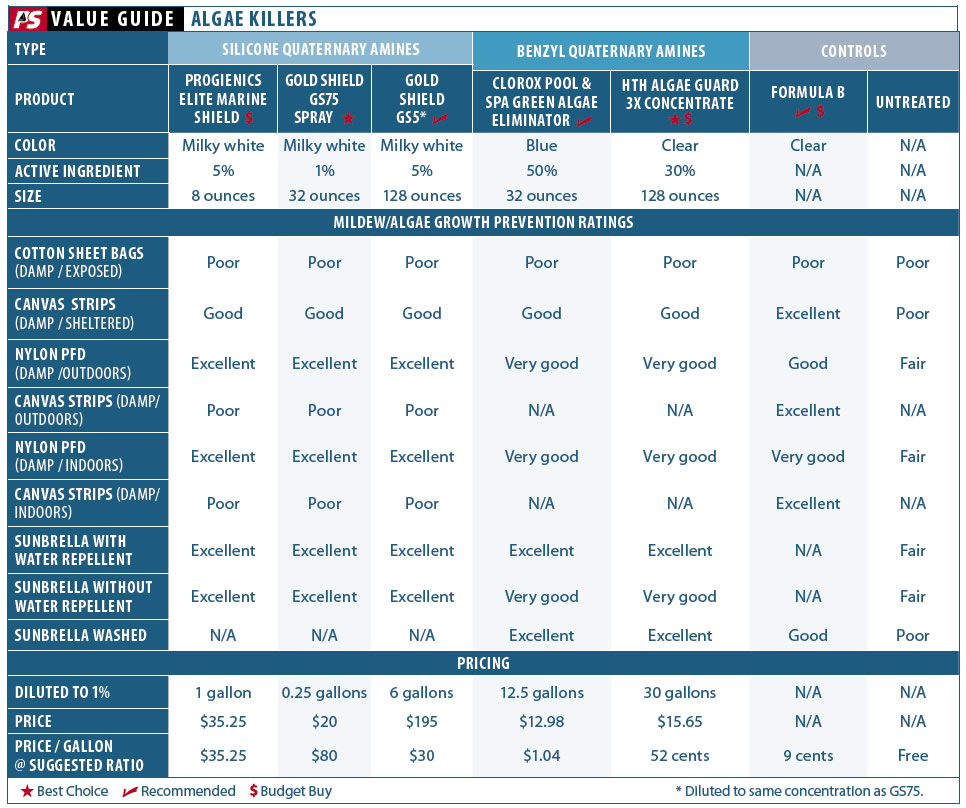
Formula B: Effective DIY Mildew Spray Recipe
We’ve dubbed the most effective homemade, anti-mildew spray formula tested as “Formula B.” It costs about one penny per ounce and is our Best Choice for protecting materials like cotton or wood.
Like the other mildew preventers, you should use Formula B by simply spraying the product on, wiping away any excess, and then leaving it on the substrate. Before applying to any fabric, test the spray on an inconspicuous sample spot.
Formula B recipe
1 quart of hot water
2 tablespoons baking soda
2 tablespoons Borax
1 tablespoon trisodium phosphate (TSP)
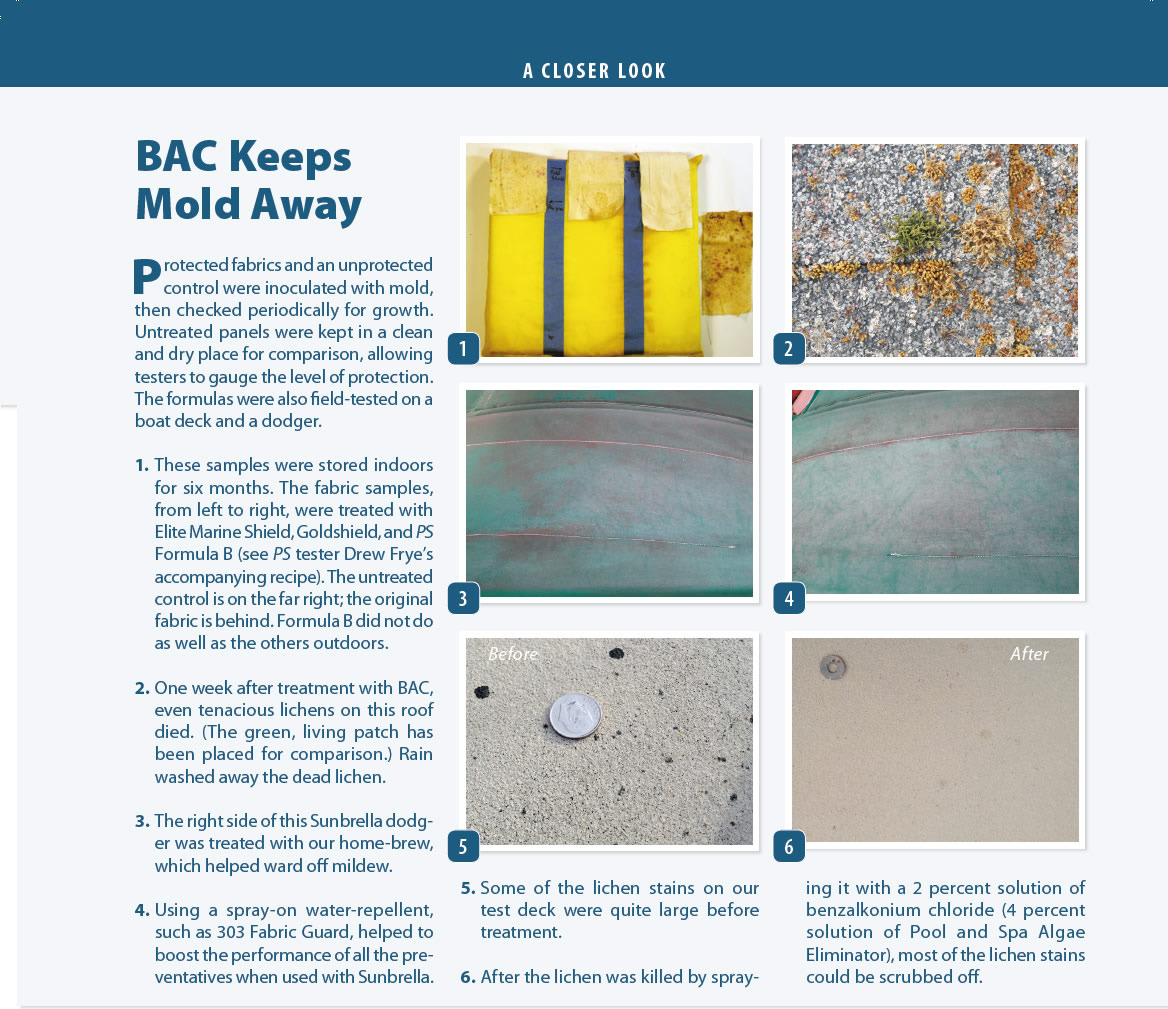








































wondering what percentage to use of the BAC for cleaning lichins off patio or bricks, thanks
I use an O3 generator to kill most everything in closed spaces.
It does a good job on odor, mold, and mildew, and although I can give no controlled results, bugs and rodents find an ozonated atmosphere toxic.
Remember that ozone is toxic to people (0.1 ppm OSHA 8-hour limit). 6-10 ppm is recommended to kill mold, so if dosed high enough to be an effective biocide, the boat will need to be ventilated before entering. Long term use will age fabrics and interiors. Ozone has very poor penetrating properties compared to anti-mildew cleaners, and no residual bio-static properties. Thus, it is not recommended by health authorities. We accept it for shock treatments, but not for continuous treatment.
The EPA has an ozone generator site that discusses the pluses and minuses at length. https://www.epa.gov/indoor-air-quality-iaq/ozone-generators-are-sold-air-cleaners
Thank you Drew for your input on ozone. With bars using the system to clear the air we would (normal prople) would expect it to be safe and transferable. Dosage is the key and in this case the lack of residual protection make ozone a less than ideal system for biologic control. Thanks again
I wash my interior fiberglass with a two step process.
1) Spray with white vinegar, full strength, rub with a soft strub brush
2) Wipe down with a sponge dampened with Baking Soda & water, about 1/4 cup to 1 qt warm water.
I also use this on my teak picnic table, followed by rinsing with lots of water, works great.
For years, I have used monoethylene glycol (cheap antifreeze) to kill mold, mildew, rot fungi, and lichens. It works well and even seems to penetrate ordinary paints (not catalyzed). According to a Gougeon test, it may actually improve wood/epoxy bonding. Its toxicity calls for care in handling, but so does BAC. One salient difference is that MEG does not bond to any substrate I know of and is very water soluble (even hygroscopic).
What effects, if any, do any of these BAC formulations have on subsequent paint or glue application? (I’d expect trouble with the siliconized ones.)
Benzalkonium chloride (BAC) is used in many mildew-resistant paints, so I would not expect any problems with appropriate doses. I cannot find any research on siliconized paints and BAC. Ethylene glycol is used in most latex paints as a drying rate/gloss agent (helps to maintain a wet edge by slowing drying). (I formulated paints and produced certain ingredients in a former life.)
Epoxy bond testing suggests that as long as the glycol has evaporated from the surface there does not seem to be any significant effect on bonding, good or bad. But it can take a long time for the glycol to leave the surface (days).
The Clorox product seems to have changed its’ formulation, and is now “Clorox Pool & Spa Green Algae Eliminator2”, and does not contain BAC.
Correct. Practical Sailor changed it’s recommendation for this sort of application to Wet-and-Forget a few years ago, although that has not trickled down to back articles. Wet-and-Forget is 9.9% BAC. The dilution rates must be adjusted accordingly.
When i enter my boat (HR Monsun 31 from 1978) it smells normal but anything that was on board and is taken off has a strong musty smell. Especially plastic based things even toolboxes etc. Have tried everything, vi egar, chlorine, baking soda, ozone,…. but what puzzles me most is i cant ever smell it when on board???